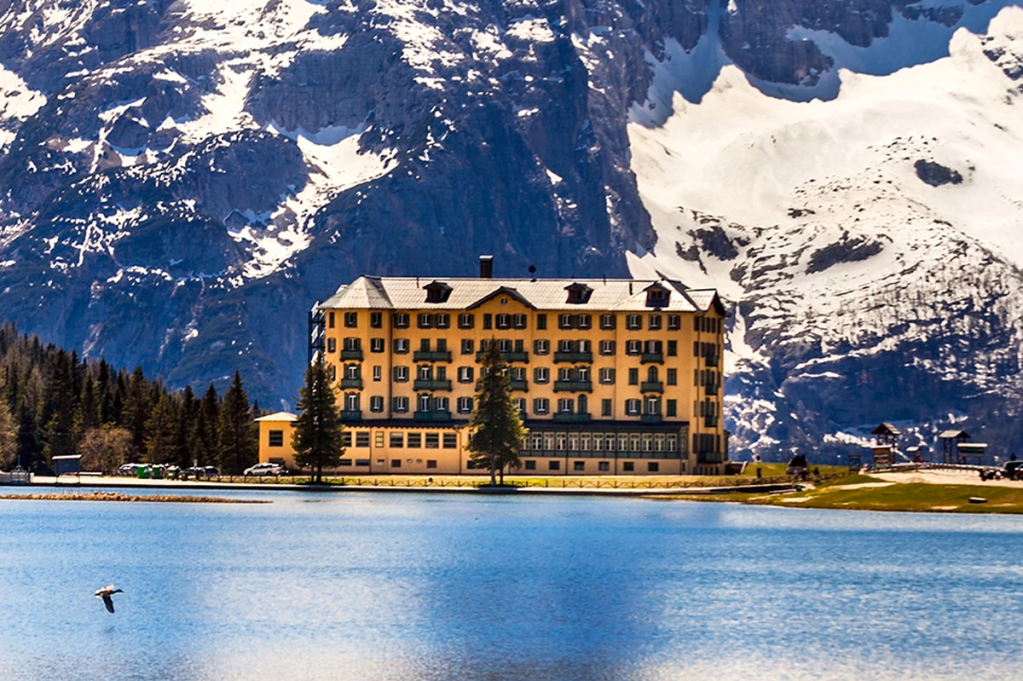In Johanne Lykke Holm’s neo-gothic novel Strega, Rafaela, claustrophobic in her parents’ “yellow” and “dusty” flat, dreams of working as a maid at the mountain-nestled Olympic Hotel. She luxuriates in a bath with a brochure, mesmerized by photographs of “girls in pearl-white aprons, girls eating ruby-red apples straight from the tree.” It’s a foreshadowing of the post-lapsarian limbo she is about to enter.
Rafaela arrives with eight other girls at the remote and unheimlich alpine hotel: the proportions seem “off” and there’s a “smell of dust and water and burned hair.” Even the lake feels carnivorous, claiming lives every year. The book lies in the shadowlands of great gothic works such as Bram Stoker’s Dracula and Stanley Kubrick’s film The Shining and dons the cape of their classic motifs: the outsider in sinister surroundings. But it’s not nature the girls must fear, but red-blooded men.
The hotel is devoid of guests, but the girls still work like clockwork ghosts, making up empty rooms that “smelled of raw meat and red mold.” One fateful night, men arrive at the hotel for a carnival: a “festival of death.” As the girls dance and serve them, the air is pungent with lust and threat. And then, every mother’s worst nightmare happens: one of the nine teenagers disappears.
The girls form a search party and “wade through swamp and moss and ice-cold water.” Rafa is haunted by the idea of the murderer, which Holm uses as a metonym for the unspoken menace of men. Rafa recalls the lurking male threat that she felt as a child: “In every woman’s life, there’s someone waiting at the gate. We are all candidates, but only some of us are chosen.”
This is a sensuous tale of violence. Holm conjures a world of heady scents that is both supernatural and hyper-real. Tarot cards are burned, bitter tea is drunk, mouths are painted bright red. Descriptions of the maids’ self-harming (‘Small, even cuts and scalding water’) have a lingering passivity. Translated from the Swedish by Saskia Vogel, Strega abounds with unusual words such as “coolth” (pleasantly low temperature) and “saponify” (to turn fat into soap). The world Holm and Vogel create, however, is textured with language so voluptuous, and Rafa’s teen energy is so earnest and intense (“I bit my bottom lip until it bled”), that the novel, like the girls, exists in a twilight zone, somewhere between the gothic tradition and the hyperbole of teen fiction.
Indeed, I hope it is read by young adults, because this is a body horror that expresses both patriarchal violence and female masochism, encapsulated by Rafa’s line: “The evil comes from within and the evil comes from without.” But there is a hopeful tone to the final pages, as the book ends with the “pink clouds” of dawn.
Holm, in her mid-thirties, is already feted in literary circles (Strega was shortlisted for the European Union Prize for Literature). Here she delivers a book that whispers a dark truth felt by many women: that not only do they need a room of their own but a body of their own – one that is protected both from men and from themselves.
This article was originally published in The Spectator’s UK magazine. Subscribe to the World edition here.

























